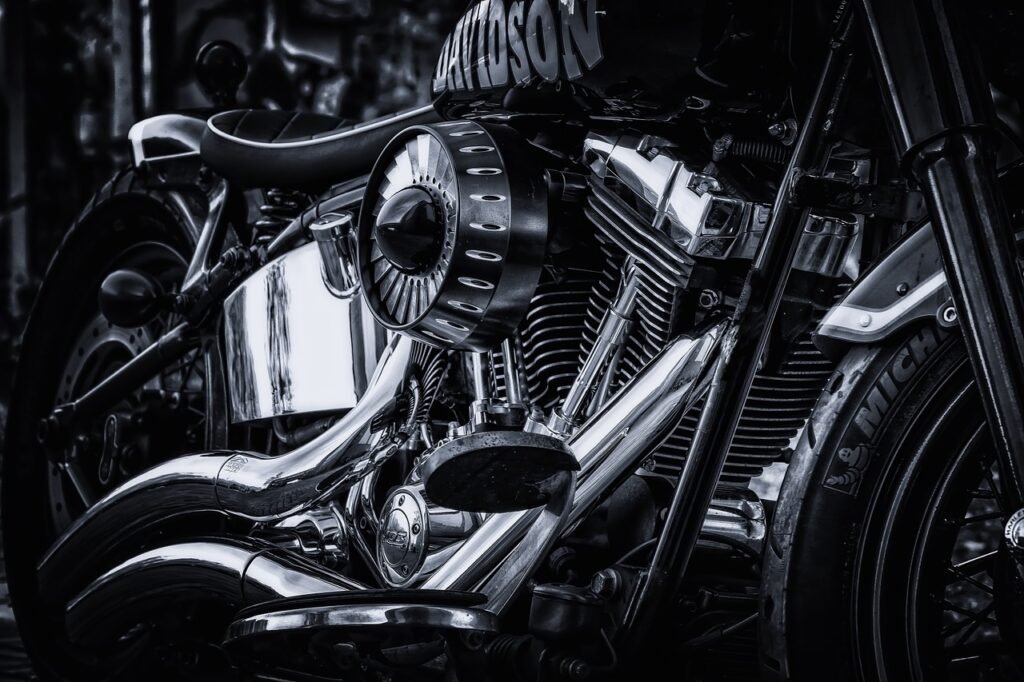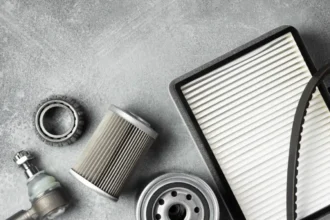Are you wondering how to change your motorcycle oil like a pro? You’re not alone! Many riders ask themselves whether they should do it themselves or leave it to a mechanic. The good news? Changing your motorcycle’s oil can be simple with the right tools and knowledge. This step-by-step guide will show you how to perform this essential maintenance task and ensure your bike runs smoothly for years to come.
Why Changing Your Motorcycle Oil is Crucial
Motorcycle oil does more than just lubricate your engine; it plays a critical role in cooling, cleaning, and protecting internal components. Regular oil changes can prevent breakdowns, extend the life of your engine, and improve overall performance. Over time, oil becomes contaminated with debris, loses its viscosity, and can no longer effectively protect your engine.
But how often should you change your motorcycle oil, and what type of oil should you use? Let’s dive into the process of oil changes, and soon you’ll feel like a seasoned pro.
How Often Should You Change Your Motorcycle Oil?
Most motorcycle manufacturers recommend changing the oil every 3,000 to 5,000 miles, but this can vary depending on the type of motorcycle you have and the type of oil you use. Regular maintenance is key to ensuring your engine remains in peak condition.
What You’ll Need to Change Your Motorcycle Oil
Before you get started, gather these essential tools and supplies:
- Motorcycle oil (check your owner’s manual for the recommended type and viscosity)
- Oil filter (compatible with your motorcycle)
- Oil filter wrench
- Oil drain pan
- Funnel
- Torque wrench
- New drain plug washer
- Cleaning rags or paper towels
- Safety gloves
Now that you have everything ready, let’s move on to the oil-changing process.
Step-by-Step Guide: How to Change Your Motorcycle Oil
Step 1: Warm Up the Engine
Start by warming up the engine. A warm engine helps the oil flow out more easily. Let your bike idle for about 5-10 minutes, then turn it off and place it on a stable stand.
Step 2: Remove the Oil Drain Plug
Position your oil drain pan beneath the oil drain plug, typically located at the bottom of the engine. Using a wrench, carefully remove the drain plug. Allow the oil to drain completely into the pan, which should take about 5-10 minutes.
Pro Tip: Be cautious of hot oil—it can burn your skin, so wear gloves for protection.
Step 3: Remove the Oil Filter
Once the oil has drained, use an oil filter wrench to remove the old oil filter. Be prepared for some additional oil to come out when you remove it. Make sure the rubber gasket from the old filter doesn’t stick to the engine.
Step 4: Install the New Oil Filter
Before installing the new filter, apply a thin layer of fresh oil to the rubber gasket of the new oil filter. This ensures a proper seal. Screw the filter onto the engine by hand, and once it’s snug, use a torque wrench to tighten it to the manufacturer’s specifications.
Step 5: Replace the Drain Plug and Washer
Inspect the drain plug for any damage or wear. Replace the old washer with a new one, and reinstall the drain plug. Tighten it with a torque wrench to the correct specification as listed in your motorcycle manual.
Step 6: Add New Oil
Now it’s time to add fresh oil. Use a funnel to carefully pour the recommended amount of oil into the engine. Be sure not to overfill—check the oil level with the dipstick to ensure it’s within the proper range.
Step 7: Check for Leaks
After you’ve added the oil, run the engine for a few minutes and check for any leaks around the oil drain plug or filter. If you see any oil seeping, stop the engine and retighten the components.
Step 8: Dispose of Old Oil Properly
Never pour used oil down the drain or onto the ground. Take the used oil to a recycling facility or an auto parts store that accepts oil disposal.

Motorcycle Oil Types: Which One is Right for Your Bike?
Choosing the right oil for your motorcycle is essential. Motorcycles typically use three types of oil:
- Mineral Oil: Best for older bikes or smaller engines. Requires more frequent changes.
- Synthetic Oil: Offers superior protection and is designed for high-performance motorcycles.
- Semi-Synthetic Oil: A mix of mineral and synthetic, providing a balance of performance and value.
Check your motorcycle’s owner’s manual for recommendations on the best type of oil for your bike.
Common Mistakes to Avoid
Changing your motorcycle oil can be straightforward, but even experienced riders can make mistakes. Here are some common errors to avoid:
- Not warming up the engine first: Cold oil flows slowly and won’t drain completely, leaving dirty oil behind.
- Over-tightening the oil filter or drain plug: This can damage the threads or cause a leak.
- Forgetting to replace the washer: A worn-out washer can lead to oil leaks.
- Overfilling the engine with oil: Too much oil can cause pressure buildup and engine damage.
FAQ: Motorcycle Oil Changes
Q1: Can I use car oil in my motorcycle?
No, it’s not recommended. Car oils contain additives that aren’t suitable for motorcycle engines and clutches. Always use motorcycle-specific oil.
Q2: How can I tell if my oil needs changing?
If your oil looks dark and gritty when you check it with a dipstick, or if you notice a decrease in engine performance, it’s time for a change.
Q3: What happens if I don’t change my motorcycle oil?
Neglecting oil changes can lead to engine wear, overheating, and even complete engine failure over time.
Q4: Should I change my oil filter every time I change the oil?
Yes, it’s best to replace the oil filter with each oil change to ensure maximum engine protection.
Q5: How much does it cost to change motorcycle oil?
If you do it yourself, an oil change typically costs between $20-$50, depending on the type of oil and filter you use. Professional oil changes can cost $50-$150.
Maintenance Tips to Keep Your Motorcycle Running Smoothly
Changing your oil is just one part of routine motorcycle maintenance. Keep these tips in mind for a longer-lasting, well-performing bike:
- Check tire pressure regularly and ensure they’re inflated to the manufacturer’s specifications.
- Inspect and clean your air filter to ensure optimal airflow.
- Keep your chain lubricated and properly tensioned to avoid wear and tear.
- Regularly check your brake pads and replace them if they show signs of wear.
By keeping up with basic maintenance like oil changes, you’ll not only extend the life of your motorcycle but also improve its performance and ensure a safer ride.
Conclusion: Changing Your Motorcycle Oil Like a Pro
Changing your motorcycle oil doesn’t have to be a daunting task. With the right tools, proper techniques, and a little practice, you can confidently take care of this maintenance job yourself. Not only will it save you money, but it’ll also give you the satisfaction of knowing your bike is in top condition. By following these steps, you’ll be changing your motorcycle oil like a pro in no time.
Remember, keeping up with regular oil changes is one of the best things you can do to maintain the health of your motorcycle’s engine. Now that you know how to do it yourself, you’re ready to hit the road with confidence!









